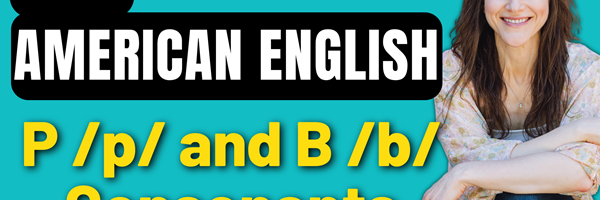(Video Transcript)
Card, guard
Class, glass
Sack, sag
Let’s learn how to pronounce the K and G consonants in American English.
How to pronounce the K /k/ and G /g/ consonants: American accent training
The K and G consonants are very similar.
They share the same lip, tongue, and jaw placements, which means they are made in the same place in the mouth. Watch as I say the two sounds, and you’ll notice that my mouth is in the same position for both sounds.
K,G, K, G
They also share the same type of air release or manner. These consonants are called stop consonants, which means the airflow is stopped somewhere along the vocal tract as you pronounce them. For the K and G consonants, the airflow is stopped where the back of the tongue touches the soft palate, or the back of the mouth. The air is released as you bring the tongue down.
K, G
But where they differ is voicing. The K consonant is a voiceless consonant, which means it is made with just air passing through the vocal cords and out of the mouth. The vocal cords are turned off as you say this sound.
K.
The G consonant is a voiced consonant. This means the vocal cords are turned on as you say this sound, and you should feel a vibration in the throat when you say it.
G.
When stop consonants come at the end of a syllable or word or at the end of a thought group, sometimes native speakers don’t release the sound. For the K and G consonants, this means the back of the tongue touches the soft palate, then it remains in contact with the soft palate at the end of the sound. This is called an unreleased consonant.
This happens in a phrase like big deal. Native speakers typically hold the G in big.
Big deal. Big deal.
It’s not big-uh deal, with a released G, but big deal.The airflow is only released when you pronounce the next sound, the D in deal.
Not all native speakers use an unreleased G consonant in the phrase big deal. Sometimes native speakers use a very small release when they pronounce the G in big.
Big deal.
To pronounce the K and G consonants, the tongue pulls back into the mouth, and the back of the tongue makes contact with the soft palate. This stops the airflow. A small amount of air pressure builds up in the back of the mouth and throat. Then the air is released as you drop the tongue. This release of air is called aspiration.
The tip of the tongue can be down, touching the back of the bottom front teeth.
K, G.
The lips do not participate in these sounds, so the lips can be relaxed or in a neutral position.
Watch an animation of the K and G consonant sounds. This animation was created from actual videos of a real person pronouncing the K and G sounds. The animation shows the side view of the person's face, and I slowed it down to half speed. First you’ll see the K consonant sound. Watch how the tongue pulls back and makes contact with the soft palate.
Now the G consonant. Notice the same tongue and mouth placement, but you’ll hear voicing or vocal cord vibration.
When making the G consonant, you should feel vibration in two places: in the throat and at the point where the articulators touch, which is where the back of the tongue touches the soft palate. This is the vibration of the air as it exits the mouth.
The K consonant does not have vibration because it is a voiceless sound, so the vocal cords are turned off as you say it.
Let’s take a closer look at the K and G consonants.
The K /k/ and G /g/ consonants: Up close and in slow motion
Here is the K sound in isolation. Notice how the lips are open and neutral. You can’t see the back of my tongue very clearly, but the tongue pulls back and touches the soft palate. The tip of the tongue is down, behind my bottom front teeth. Then the tongue drops down, and the air is released.
Now the word kite. Again, you’ll see the lips are open and neutral. The tongue pulls back and touches the soft palate. Then the tongue drops down, and the air is released.
Since the lips don’t participate in the K or G consonants, it is common for the lips to take the shape of whatever sound comes next, and they’ll do this while you pronounce the K or G consonant. This happens in a word like grab. Notice how my lips are already rounded for the R consonant even as I say the G consonant.
The K /k/ and G /g/ consonants practice
Let’s practice a few words together. Say the words with me. We’ll start with the K consonant.
Can’t, K, can’t
Echo, K, echo
Take, K, take
Now the G consonant. Feel the vibration of the vocal cords in your throat and where the back of the tongue touches the soft palate. The vibration is strongest just before the tongue drops down to release the air and the sound.
Give, G, give
Bigger, G, bigger
Jog, G, jog
Thanks so much for practicing the K and G consonants with me. I hope this video was helpful! But we don’t have to end the practice here - let’s keep working together! Check out the additional practice videos of the K and G consonant sounds in English Pro, my comprehensive online accent training community. The details on how to enroll in English Pro are in the description below. Thanks, and have a great day!
And I'd love to hear from you - contact me to learn how we can work together to perfect your American English pronunciation!



